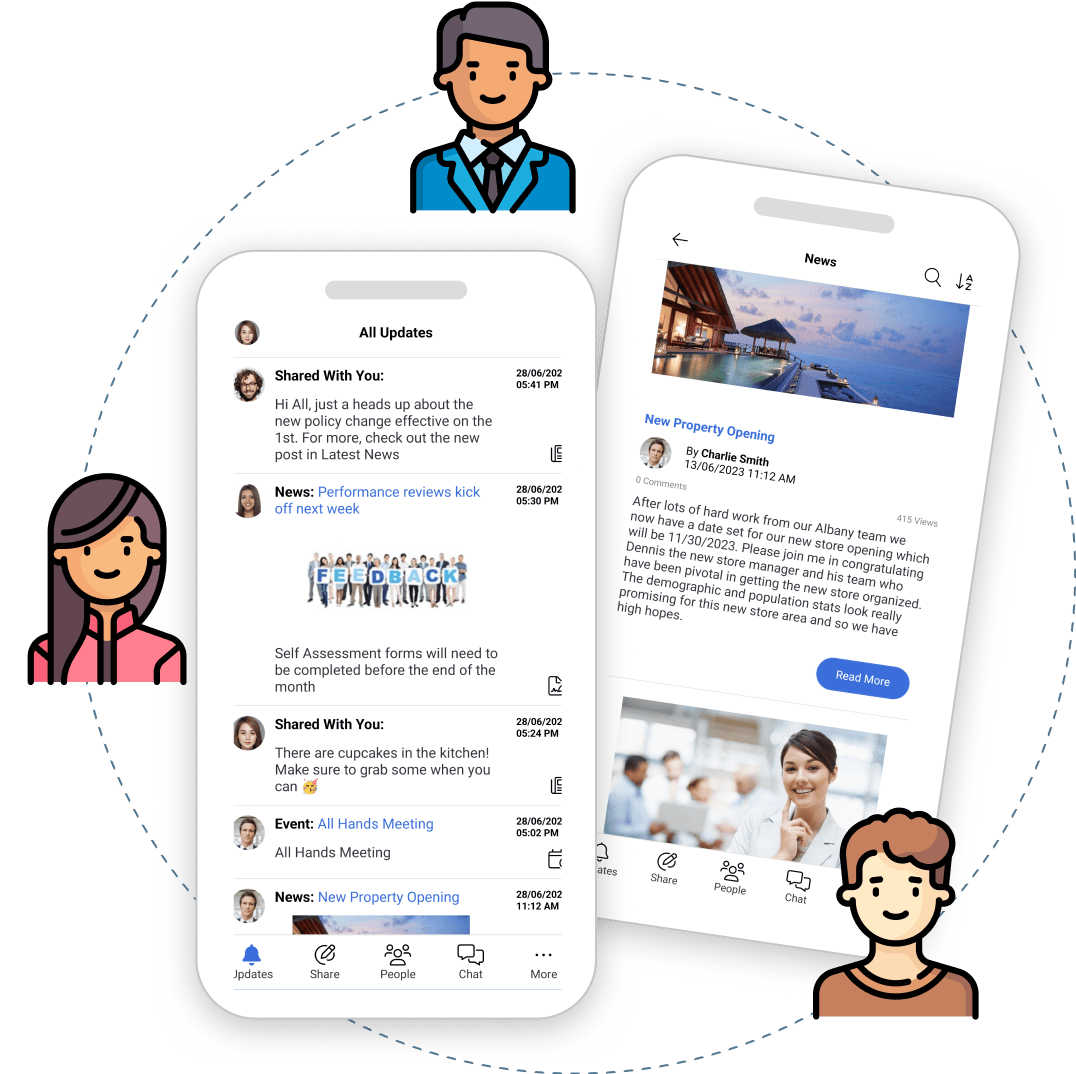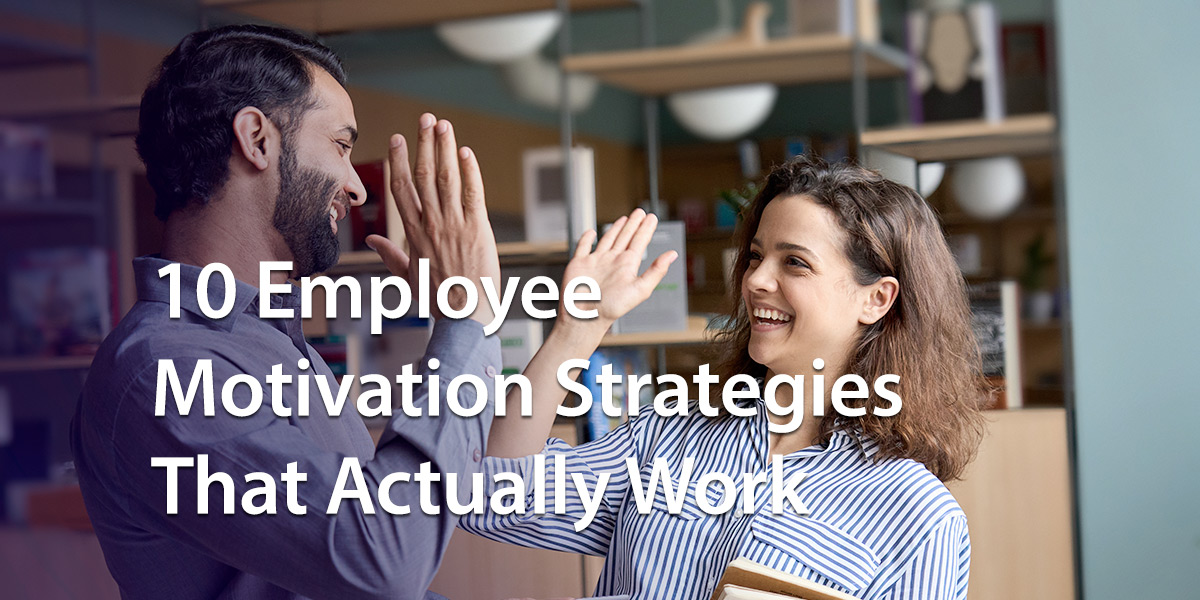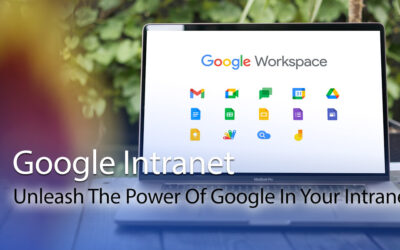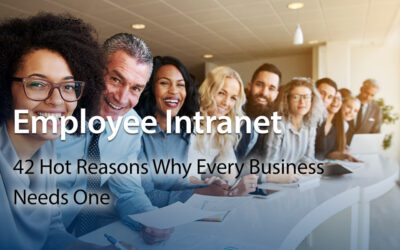Employee expectations are changing. Your workers are used to seamless digital experiences in their personal lives and now expect the same at work. For all employees – not just remote workers – the employee experience has undoubtedly become digital.
Whether workers are office-based, remote, or hybrid, a good digital employee experience will empower employees, driving employee satisfaction. It also supports enhanced productivity, improved business outcomes, and increased customer satisfaction.
This ultimate guide walks you through everything you need to know. We explore why a great digital employee experience is crucial and how to get started. We also discuss best practices and share ways to measure the impact of your efforts.
A definition is a great place to start, so let’s dive in.
What Is Digital Employee Experience?
The digital employee experience describes how effectively your people interact with workplace technology and digital tools over every step of the employee lifecycle.
An employee’s digital experience covers a range of aspects, including the following:
Performance
How reliable are digital tools? Is digital technology integrated and configured to ensure an optimal digital employee experience?
Reliability
Does digital technology crash frequently? Are load times fast enough?
Mobile Technology
Do digital tools support remote work? Can employees interact with digital technologies to support anytime and anywhere working?
Collaboration
Do your digital transformation efforts include collaboration tools for cross-functional team working? Are your digital tools improving employee productivity and helping you achieve business outcomes?
However, it’s about more than just ensuring a great digital employee experience for the individual worker. It’s also about how IT teams oversee the digital workplace and understand employees’ needs. The IT department plays a critical role by responding to issues, training employees, and deploying new digital tools to support business functions.
Why Is The Digital Employee Experience Important?
Remote and hybrid working is now a permanent fixture in the modern digital workplace.
In 2024, over 40 percent of workers are hybrid or work from home. Perhaps most significantly, workers say they want to work remotely at least some of the time. However, according to a report from Gartner, 47 percent of workers report experiencing digital friction that impacts their ability to do their jobs.
A slow, clunky digital employee experience gets in the way of efficient and effective work. Your employees struggle to make progress, leading to frustration and low morale. This creates a perfect storm that sees workers looking outside the company.
By contrast, great digital employee experiences have the opposite effect. Workers feel empowered, energized, and able to give their best.
Here are the headline benefits of a positive digital experience:
Support For Remote And Hybrid Workforce
Remote and hybrid working are here to stay. However, digital tools are the main or only way for these workers to communicate, connect with colleagues, and get stuff done.
A well-crafted digital employee experience strategy bridges the gap between team members, regardless of where they work. It ensures everyone has equitable access to technology support, communication and collaboration tools, and essential company resources.
In short, it cultivates a collaborative spirit and inclusive company culture that transcends physical boundaries.
Improved Employee Engagement
Providing your people with efficient digital tools increases job satisfaction and employee morale. The workforce has the resources needed to complete daily work efficiently.
Furthermore, open communication lines encourage employee feedback and the exchange of ideas.
Empowering workers in this way drives up employee satisfaction and, ultimately, engagement.
More Productive Employees And Increased Profitability
Waiting for IT teams to resolve issues, clunky systems, poor navigation, and inadequate search are all barriers to productivity.
Digital employee experience management resolves these issues with simplified and streamlined workflows. Less time is wasted on troubleshooting or searching for information that slows down productivity.
User-friendly digital platforms and efficient workflows contribute to higher-quality output. At the end of the day, more productive employees impact the bottom line, so your business makes more money.
Enhanced Customer Satisfaction
Research shows that great customer experiences and employee experiences are two sides of the same coin.
Workers who feel valued and empowered believe in your brand. These positive attitudes are reflected in their interactions with customers, developing long-lasting satisfaction that results in repeat business.
How To Create A Great Digital Employee Experience In Six Simple Steps
As with most business functions, breaking a task into bite-sized chunks makes it more manageable. Our simple six-step process makes designing a digital employee experience solution easier than you think.
1. Define Employee Journeys
Before you can begin to improve the digital employee experience, you need to understand how workers currently interact with technology.
The first step is to develop employee personas and define employee journeys. Different employee segments, job roles, and teams will interact differently with digital resources. You need to understand how they use technology, identify pain points, and consider opportunities for improvement.
Allowing employees to contribute to this vital stage will help you develop a user-centric solution that addresses their needs. Put your people center stage by conducting employee surveys and gathering employee feedback.
Armed with these valuable insights, you can begin addressing specific needs and mapping out a comprehensive digital experience solution.
2. Set Goals And Objectives
Have a clear vision of what you want to achieve. The digital employee experience must align with and contribute to your overall business goals.
To provide that clarity, ask yourself the following questions:
- What digital tools are needed to achieve our business goals?
- What are the current digital experience pain points we need to address?
- What professional development will employees need to get the best out of the digital workplace?
- What are the success indicators, and how will we measure them? (Later, we will share specific guidance on KPIs)
3. Set Up A Cross-Functional Team
Developing a great digital experience requires a holistic approach and the input of the IT department and HR. A cross-departmental team ensures a broad range of perspectives are considered and helps get buy-in from the workforce.
The digital experience project team is responsible for the following tasks:
- Championing the overall employee experience
- Taking the lead on internal communications about the digital workplace
- Setting the strategy and KPIs
- Ensuring user satisfaction
- Researching and selecting digital employee experience examples, like self-service tools, seamless single sign-on apps, and integrated digital solutions
And with many hands on deck, a project team makes implementing the strategy a whole lot easier.
4. Research And Select Digital Tools
This is the crucial step when you decide on the platforms to deliver your digital employee experience. Invest time and resources into researching the options to ensure they satisfy users’ needs and meet your business goals.
Here are some pointers to inform your research:
- Take advantage of free demos and trials. Often, there’s no substitute for getting your hands dirty and playing around with the software
- Check out independent review sites and customer testimonials
- Ensure the digital tools integrate with each other for a seamless user experience. The last thing you want is a disjointed experience and piecemeal solutions
- Mobile technology is a must for today’s digital employee
- Look for platforms that allow for customization and personalization
- Double-check that vendors’ data privacy and security protocols match your expectations
Remember, digital transformation isn’t a one-off exercise. New tools and platforms emerge all the time. So, include review mechanisms in your digital employee experience plan to stay ahead of the curve.
5. Prioritize Employee Training
There’s no point in implementing a solution if your people don’t know how to get the most out of it. You want to set employees up for success from the get-go with training and technical assistance. Invest in a formal training program and roll it out to all staff.
Moreover, consider having super-users who can answer questions and address issues for team members in the moment.
6. Measure Digital Employee Experience
Measuring the digital employee experience is a critical part of the process. Improvements depend on having accurate, helpful analytics and KPIs to measure and track success. Aim for a comprehensive set of success measures that include the following:
User Satisfaction Scores
Assess user satisfaction regularly through surveys, snap polls, and feedback forms. Aim for high satisfaction scores and track your progress.
Task Efficiency
Measure the time it takes employees to complete tasks. Efficient, streamlined processes contribute to a positive employee experience.
Employee Retention
Monitor your employee retention rates. An optimal digital employee experience leads to greater employee satisfaction, which, in turn, impacts retention rates.
Productivity Metrics
Use productivity measures like output per hour or project completion rates to gauge the effectiveness of your digital employee experience.
IT Support Requests
Keep an eye on operational aspects like ticket resolution, downtime, and deployment time. Fewer issues and support requests indicate an improved digital employee experience.
What Are The Barriers To An Effective Digital Employee Experience?
Our discussion wouldn’t be complete without looking at some of the challenges. One of the biggest is the sheer complexity of today’s digital workplace. Most companies use multiple software apps and digital platforms to complete daily tasks. Compatibility issues and poor integration can frustrate users and impact the digital experience.
Moving to a tech-driven workplace may require a cultural shift within the organization. Some employees may be wedded to traditional ways of doing things and might resist new digital tools and workflows.
Furthermore, implementing a DEX strategy requires investment and commitment at the C-suite level. Executives need to understand the value and ROI of the digital employee experience. Emphasizing improved employee productivity and the wider benefits to retention, engagement, and customer experiences is critical here.
Manage Digital Employee Experience With These Best Practices
We round up this ultimate guide by exploring best practices to inform your approach and ensure great digital employee experiences.
UX And UI
It almost goes without saying, but UX and UI are critical to success. Digital technology should be intuitive to use, easy to navigate, and visually appealing.
Integration
Different software should integrate seamlessly with automatic data transfer between tools.
Personalization And Customization
Your people will have a better overall employee experience when platforms meet their individual preferences and needs. At a minimum, employees should be able to tailor the software’s look and function. It would be even better if the tools curated personalized content and experiences for team members.
Performance
Speed, reliability, and responsiveness are critical markers that separate an average digital employee experience from a superior one.
Employees’ Digital Experience: Main Takeaways
In today’s fast-changing digital landscape, technology is pivotal to ensuring all employees are empowered and enabled to do great work. AI is set to unleash massive changes in the workplace, so now’s the time to be ready with a robust digital employee experience strategy.
Use our six-step process to ensure your organization has a comprehensive DEX solution that meets business and employees’ needs while future-proofing your business.
About MyHub
We are a leading provider of beautifully designed intranet software that’s easy to use and simple to deploy. Under one virtual roof are all the digital tools your people need daily, including instant messaging, interactive news feeds, automated workflows and forms, plus much more.
Even better, MyHub integrates seamlessly with dozens of the enterprise apps you already use, including Salesforce, Shopify, Monday, MS Office, and Google Workspace. Furthermore, our dedicated mobile app supports remote work and on-the-go employees.
Find out how MyHub can transform your digital employee experience with a free demo or 14-day trial.










0 Comments